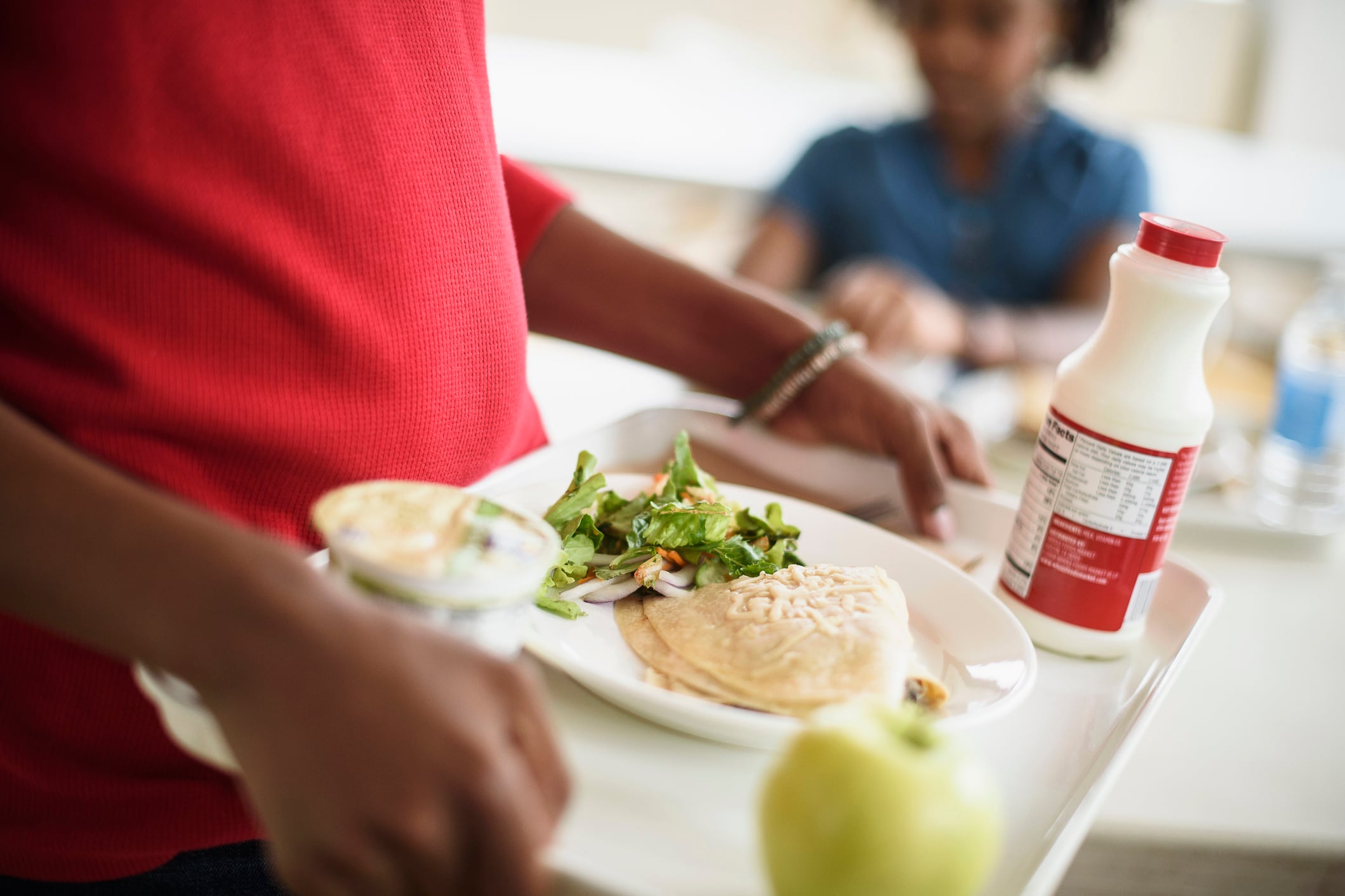Sign up for Chalkbeat New York’s free daily newsletter to keep up with NYC’s public schools.
Kevin, a sixth grader at P.S. 146 in Queens who hopes to one day work as a doctor, said he’s always tried to study nutrition.
But it wasn’t until he participated in the Hip Hop H.E.A.L.S., or Healthy Eating and Living in Schools, after-school program last year that he found an engaging way to learn about it at school.
The program, developed in partnership between Columbia University neurologist Olajide Williams and hip hop artist Doug E. Fresh, relies on music to help teach students about healthy eating.
Though the music seemed “old” in style to 11-year-old Kevin, the lessons still resonated. He remembers the theme song particularly well.
“It was different from classical teaching,” said Kevin. (Chalkbeat is using his first name only for privacy reasons.) “It had more of a fun approach than just sitting there staring at a blackboard.”
What Kevin participated in was one of two after-school healthy eating programs that are being studied as part of a partnership between the after-school provider New York Edge and Columbia University. About 300 students across 20 school sites were provided with either the Hip Hop H.E.A.L.S. program, or NY Edge’s Food Explorers program, with their nutritional choices tracked over the course of 10 or more weeks.
Through the partnership, researchers aim to learn if the educational interventions from these programs can help kids make healthier choices, particularly at chain restaurants.
New York City Mayor Eric Adams has also prioritized establishing healthier eating habits among the city’s young people. Since the start of 2022, the city has committed $1 million to integrating food education into schools in coursework, after-school programs, and more, according to a recent report.
Most recently, the city started its “Chefs in Schools” initiative, partnering with Wellness in the Schools to develop plant-based, culturally relevant recipes and train New York City public school chefs.
“These meals will provide more than just nutrition,” Adams said at a Tuesday press conference. “They will expose our children to flavorful and healthy eating — because food has to taste good. No one wants to eat boring food.”
Nearly 40% of NYC public school children were overweight or had obesity, with childhood obesity disproportionately impacting Black and Latino students, according to 2019 data from the city’s Health Department. Childhood obesity also increased during the COVID pandemic, studies have found.
To address the situation, researchers aren’t necessarily trying to stop kids from eating at fast food chains, for instance, but to help them make better choices.
Nationwide, the U.S. Food and Drug Administration requires chain restaurants to post nutritional information about their menus. But Williams, who is the vice dean of community health at the Columbia University Vagelos College of Physicians and Surgeons, said research has found those listings tend to inform the decisions of educated and more affluent individuals at higher rates.
Meanwhile, people who come from lower-income backgrounds or marginalized communities tend to have their purchases driven by other factors, like cost.
“There was even a paradoxical effect where sometimes folks in these lower income communities deliberately purchased the highest calorie items as a way to maximize caloric intake per dollar,” Williams said.
The focus on teaching students to navigate settings like chain restaurants is especially important as many kids in the programs live in “food swamps,” or areas with few healthy food options, Williams said.
“We’d love to have community gardens everywhere. I’d love everyone to get home and have a cooked meal,” he added. “But the reality is many people live in food swamps. They’re going to patronize food swamps, and it’s about how we get them to make better decisions within those swamps — within those limited choices.”
Getting creative in teaching kids about healthy eating
Williams believes that combining music and learning in the H.E.A.L.S program can help change eating choices.
“We all learn our ABCs through music, for example,” he said. “Our studies have shown that leveraging music creates not just immersion, but greater retention, greater learning, and a greater ability to influence behavioral change.”
Meanwhile, the Food Explorers program, which operates at New York Edge’s more than 120 school sites, targets different aspects around healthy eating.
It teaches students foundational nutrition facts, develops practical skills like using kitchen appliances, offers exposure to different cultural cuisines, and expands environmental wellness and agricultural knowledge, said Rachael Gazdick, CEO of New York Edge.
The program also incorporates fun and immersive learning experiences, like simulating the kinds of cooking competitions that students might see on shows like “Chopped” or “Top Chef.”
Gazdick recounted one such session she attended, where students prepared a vegetable pasta dish.
“I expected it to taste terrible, to be honest,” she said. “But they were so serious about it, and so good at preparing it. It was just phenomenal.”
The partnership is a critical step forward in understanding the impacts of each program, Gazdick added.
“Kids can’t perform in the classroom if they’re not feeling healthy, well nourished, and sleeping well,” she said. “All of those things tie into academic performance and overall joy in life.”
Studying kids’ food choices
How or whether students changed their dietary habits over the course of the two after-school programs was observed in two ways, Williams said. First, students were able to choose between different food options at the school sites, with options ranging from apples to Ring Dings. Nutritional information about the offered foods was posted clearly to simulate the menus they might encounter at chain restaurants.
Second, through a partnership with Applebee’s, students received vouchers for free meals.
Researchers tracked what students chose in each instance, though students weren’t aware their orders were being studied.
An initial pilot showed success in influencing student behavior, Williams said. Over the course of the programs, students generally chose more and more foods that had lower caloric intakes and higher nutritional values. Results of the broader study are expected to be finalized by the end of this year.
Students have also taken what they’ve learned in the programs and used it to teach their families, Gazdick added.
“You remember 100% of what you teach, but you only remember a certain percentage of what you hear,” she said. “Students continuing to cook, and take things home, and sharing it all with their parents is another level of this that is critical.”
Kevin, the sixth grader who participated in the program last year, said he’s been able to put the lessons into practice. He finds himself checking nutrition facts more often, sometimes finding sugar in products he didn’t expect, like milk.
“To be in the health field, you need to learn about the basic fundamentals about how to eat healthy,” he said. “I paid close attention, so maybe it can help me in the future with med school and other stuff.”
As for his trips to Applebee’s, Kevin said the program opened his eyes to the vast range in nutrition across different meals.
“Like the mac and cheese,” he said, “I felt that had too much sodium in it, so I chose more proper stuff.”
Julian Shen-Berro is a reporter covering New York City. Contact him at jshen-berro@chalkbeat.org.





